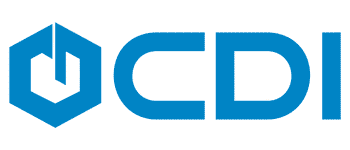Building and Customizing Reports in Laserfiche Forms 10
- Kyle Knebel
- Sep 19, 2019
- 5 min read
Updated: Dec 5, 2019

Welcome to this month’s edition of CDI’s “Consultant’s Corner.” In this article, CDI’s Software Trainer, Kyle Knebel, walks us through building and customizing reports in Laserfiche Forms, version 10.
If you are not familiar with Laserfiche Forms, it is a web application that allows organizations to collect, process, and route information based on easy-to-fill-out e-forms.
By utilizing Laserfiche Forms 10, your organization can create web forms to collect or work with information, as well as business processes to define how that information is routed, interacted with, and managed.
Let’s begin.
Kyle, what are the differences in Forms Essentials and Forms Professional?
Reporting tools in Laserfiche Forms vary, depending on the type of Forms system in place in your environment. The image below shows the Forms features available for each version. Compared to Forms Essentials, Forms Professional adds the advantage of including:
· The Performance Dashboard to the Operational Reports area
· data aggregation options like count, sum, min, and max
· data visualization options like charts and graphs

What is new in Laserfiche regarding Building and Customizing Reports in Forms in version 10?
Version 10.1 - Performance Dashboard added, and the Operational Dashboard now shows User task distribution.
Version 10.2 - Adds custom Column selection with labels and sort order; the new Summary Report feature can now run mathematical calculations on summary fields.
Version 10.3 - The Operational Dashboard and Performance Dashboard is now combined into an Operational Report. A generated report can be saved as a snapshot. Reports and snapshots can be downloaded.
Version 10.4 - No new reporting enhancements, but lots of other product enhancements!
What kinds of reports are pre-built?
When you create a new Business Process, Laserfiche Forms 10.3 or greater automatically builds an Operational Report for that process. It is available in the Reports>Operational Reports tab. For any business process, you will find a matching Operational Report.
This Operational Report will provide metrics for the selected process and its tasks. It is a quick way to identify bottlenecks, overdue tasks, and high achievers. You can easily filter the reports based on:
· tasks or instances
· currently running or finished status
· date filters



What kinds of reports can I create myself?
You can build any custom report you need. The types of reports available include:
· Summarized Reports - aggregate data into a report of any chart type
· Table Reports - display data in table columns
· Column/Bar Reports - compare values across categories
· Line/Area Reports - visualize quantitative (numeric) data
· Pie Reports - compare numerical proportions
· Funnel Reports - present decreasing proportions

How do I create my first report?
A Summary Report or a Table Report are two of the most common basic report formats that I see users building in Laserfiche Forms. Many reports are focused on summarized totals or information tracked over time. Let’s take the example of a Summary Report for a hypothetical Expense Reimbursement Request form. To build the report, we take the following steps:
Step 1) Navigate to the Reports page via the tab at the top of Laserfiche Forms. (You’ll need to be a Process Creator or System Administrator to build reports)
Step 2) While viewing the Custom Reports list, click on Create Report in the top-right corner.

Step 3) Select the data visualization option you prefer, for example, Summarized, then press Select at the bottom-right corner.

Step 4) Select one or more processes from the list of available Forms processes in your system by checking the box to the left of the process name, then press Select at the bottom-right.

Step 5) Name the Report and make it visible to users or groups who will use the report.

Step 6) At this point, you will be presented with the report design page. You’ll want to set the…
1) Report Visualization (Summarized or Table usually works well)
2) Set Type (Column) and Group Instances By (Date)

In this case, I’d recommend grouping the instances by the Form’s date of submission, grouping the dates by week, and by year.

You’ll need to scroll through the Group Instances By list to choose the field from the form (Expense Reimbursement). I chose (A) Date. Then I grouped the dates by (B) Week. Then I checked the box to add (C) Also group by year.
Step 7) Next, you’ll want to add the Vertical Axis.
For example, if I wanted to summarize weekly expenses by the total amount requested, I’d add a column for the Total_Reimbursement_Requested field. I’d label it and add the Sum option to summarize the data.

Step 8) You are now ready to save the report by clicking the Create button at the top-right corner

Another example could be a report based on how many instances are submitted of a form submission within a specific process. Since a Forms process could have more than one e-form being submitted or reviewed by users, it might be useful to see if the number of submissions in a week match the number of approvals within that same week.
What’s an example of an Advanced Report and how do I create it?
An Advanced Report might be a custom report built using values obtained from two or more business processes. An Advanced Report may not be too different from a Basic Report, but it uses some advanced techniques.
Two advanced techniques that are useful are:
1. Linked Variables
2. Filters
For example, using Linked Variables, you can take field values from two different processes and combine them within a single report. Let’s say you have a Purchase Order form that collects the total amount. In another Form, you have an Add-On Purchases form that is used to order more items from the same Vendor. Linking the two fields in your report could allow you to combine the totals without having to do any math calculations.
A filter lets you define the type of instances you want to include in the report. For example, to restrict the report to only instances that have a form with the name Starting Form.
Linked Variables
1) To link two variables, you first need to add the other process(s) that have a similar field type, like an Amount, to the report. After selecting the report type ( i.e. Summarized, Table, Column/Bar, Line/Area, Pie, and Funnel), select more than one process from the list.

You’ll see the processes listed at the top of the report, shown with a + symbol between them.

2) You’ll then need to link the two fields (variables) together. Press the hyperlink icon to link the fields.

3) Choose the Add Link button, then select the process and its related field. The only processes visible will be the ones you had selected

4) Select the variable for the first process to be used. Make sure to name the resulting single Linked Variable. It’s been named AmountTotals in this example.

5) Press Add Variable to connect the second variable from the second process.


6) Next, in the Report>Summary Data Column section, add the Linked Variable, along with any other data columns.

7) Finish and test your report as normal.
Filters
1) Click Filters, then click Add Filter.

2) Set the criteria for the new filter.

Optional: Click Add a filter in the box to add a condition to the filter.
Optional: Click Add another set of filters to add another filter.
3) Click Set Filters.

After you set the filter, the Filters button label will increment by 1 for each new filter.
We hope you enjoyed this overview on Laserfiche Forms 10 with Kyle. If you have any questions or wish to speak with one of the professionals at CDI, send us an email at support@cdi.support.




Comments